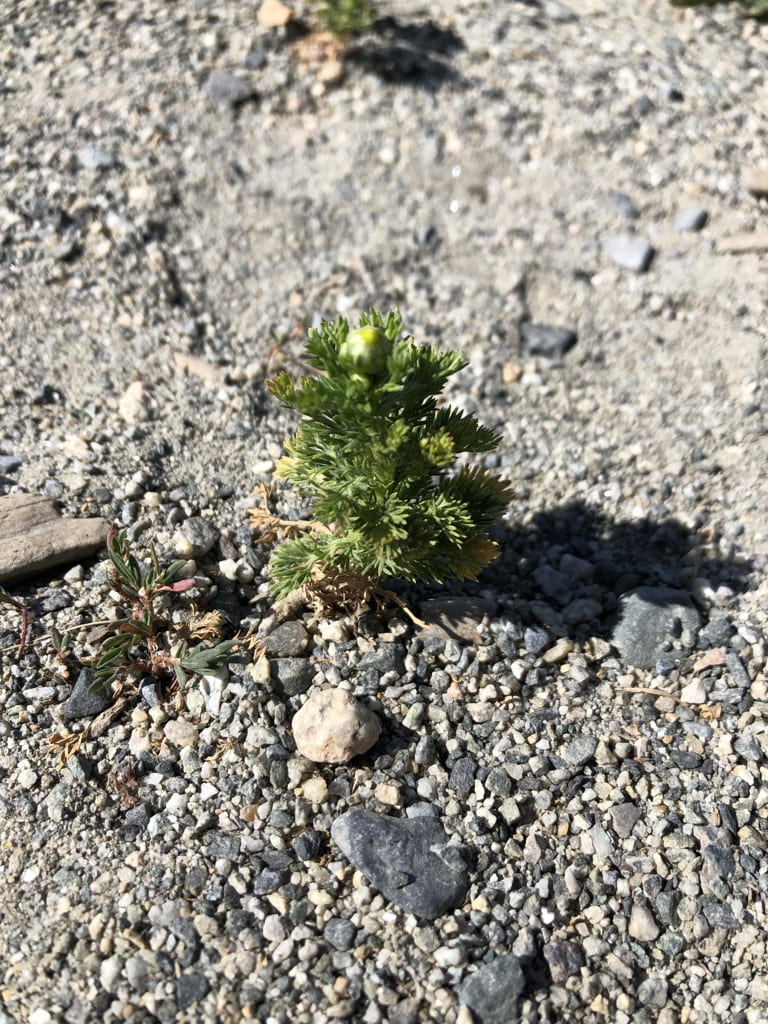Pineapple Weed
Last updated October 8, 2021. All photos by the author.

I first became familiar with this introduced species at a park a few years ago, when a family member called it pineapple grass. When I googled “pineapple grass” I quickly realized that was not the correct common name, but it set me on the path to discovering this frequently spotted edible plant’s actual names.
Pineapple weed is also called disc mayweed, street weed, and wild chamomile. To avoid any confusion we can use the scientific name Matricaria discoidea. Matricaria is medieval for “mother” or “womb” (it was used to treat uterine infections) and discoidea refers to the fact that the flower is made only of disc florets, no rays. (For comparison, a dandelion flower is ray florets only, no discs, and a sunflower usually has both.) The leaves of pineapple weed are alternately attached and deeply incised giving the plant a fluffy fern-like appearance.
If you gently rub this plant between your (clean) hands and inhale, you should be rewarded with a pleasant, sweet, pineapple-ish scent. I thought it was named because the flowers looked like pineapples, but the common name is from the scent.






Most pineapple weeds I have seen are short, less than 15 cm tall, growing in dry areas subject to frequent human tramplings, but I read that it can grow up to 30 cm tall, like the one in the garden planter. Pineapple weed was introduced to the West Coast but is native to North America. It was likely deliberately introduced as a medicinal plant. It can be used as a tea, as suggested by its other common name wild chamomile. Its pleasant smell when crushed also makes it ideal for potpourri.
It’s mid-October now, and you might still be able to spot a few pineapple weeds near footpaths and sports fields. If not, wait until late spring and find some to smell.
NEVER CONSUME ANY PART OF A WILD PLANT OR FUNGUS UNLESS YOU ARE 100% SURE OF ITS IDENTIFICATION AND PREPARATION.
Book: “Pineapple Weed.” The Flora and Fauna of Coastal British Columbia and the Pacific Northwest, by Collin Varner, Heritage House Publishing Company Ltd., 2018, p. 211.